Creative Promise Award Winner: Khadija Aziz
August 21, 2020
SDA’s Creative Promise Awards are given out to recognize excellence in a range of work in textile and fiber media by one outstanding undergraduate student and one graduate student. Our winners for 2020 were recently announced and this week we’re spotlighting Khadija Aziz, a Toronto-based digital textile artist and educator. Her fascination with the unknown has brought her to the creation of textile glitch art from her paintings and photographs through collaborations of hand and digital manipulation. Unlike traditional glitch art that requires no hand labour and craftsmanship, Khadija’s work bridges the gap between textile-making techniques and machine thinking. Read more about Khadjia’s award-winner project below.
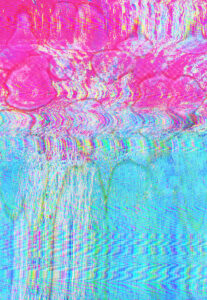
Khadija Aziz The Living Buta (Process #10) 2018, digital print on cotton sateen, 16” x 28″.
My textile glitch art manipulates images, fabrics, and other fibre materials using hand and digital means. Unlike traditional glitch art that requires no hand labour and craftsmanship, my process-based practice bridges the gap between textile-making techniques and machine collaboration. I create unexpected surface outcomes by playing with hand and digital distortion methods that are guided by spontaneity and investigate errors of the human hand. This process is realized in glitch art that I marry into textiles.
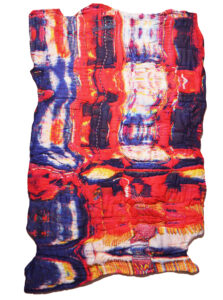
Khadija Aziz Influx II 2019, digital print, cotton on beads, embroidery floss, 30″ x 49”.
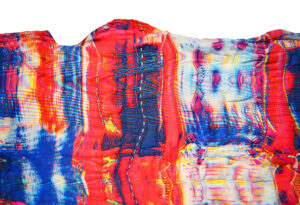
Khadija Aziz Influx II (detail) 2019, digital print on cotton, beads, embroidery floss, 30″ x 49”.
My projects begin with a printed copy of my own paintings or digital photographs on paper or fabric. I embellish these prints using embroidery and beading techniques with the goal of introducing new colours and textures in the artwork. Then, I drag the decorated textiles across a flatbed scanner following the scanner’s light to create a distorted image that shows subtle movements of my hand. This collaborative scanning process creates new colours, digital textures, and memories of my previous embellishment to my artwork. The scanned image is then reprinted onto fabric on which I respond to by outlining and highlighting certain areas through more embroidery and beading techniques. Then this new embellished work undergoes another round of scanning, and this process of hand embellishment and digital manipulation can be repeated indefinitely.
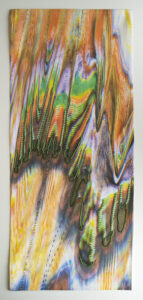
Khadija Aziz Machine & Me (Glitch 4) 2020, digital print on cotton sateen, glass beads, embroidery, nylon beading thread, embroidery floss, 16” x 40”.
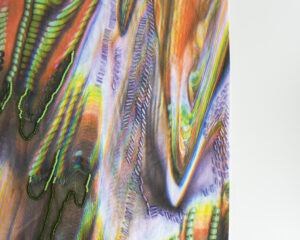
Khadija Aziz Machine & Me (Glitch 4) (detail) 2020, digital print on cotton sateen, glass beads, embroidery, nylon beading thread, embroidery floss, 16” x 40”.
As the artist, I lose agency over the outcome of each printed textile as the new compositions are determined by the digital scanner’s engagement with the texture of threads, beads, and the speed and direction of my hands’ movements. These methods of surface design produce unique colour combinations, shapes, and patterns that wouldn’t have been possible without the collaboration between the hand and machine. The outcome of such repetitive intentional play is a series of mixed-media textiles that reveal processes as memories of materials and the artist’s hand.

Khadija Aziz Temporary Home 2018, digital print on silk organza, 17” x 30.5”.
khadijaaziz.com | @_khadija_a_

Khadija Aziz The Living Buta (installation) 2018, digital prints on cotton and paper, 8.5″ x 11″ to 16″ x 28″.

1 Comment
leslie horan simon says
August 29, 2020 at 12:03 pm
Your process is as fascinating as the finished work...a brilliant combination. Congratulations!
Related Blog Articles
Award
Creative Promise Award Winner: Uyen Tran